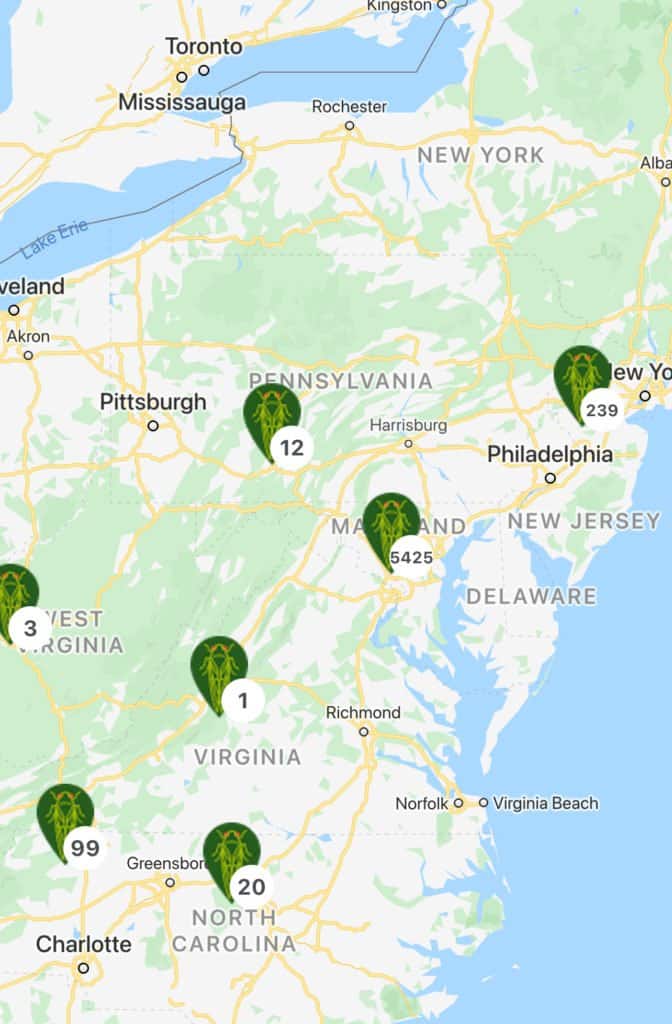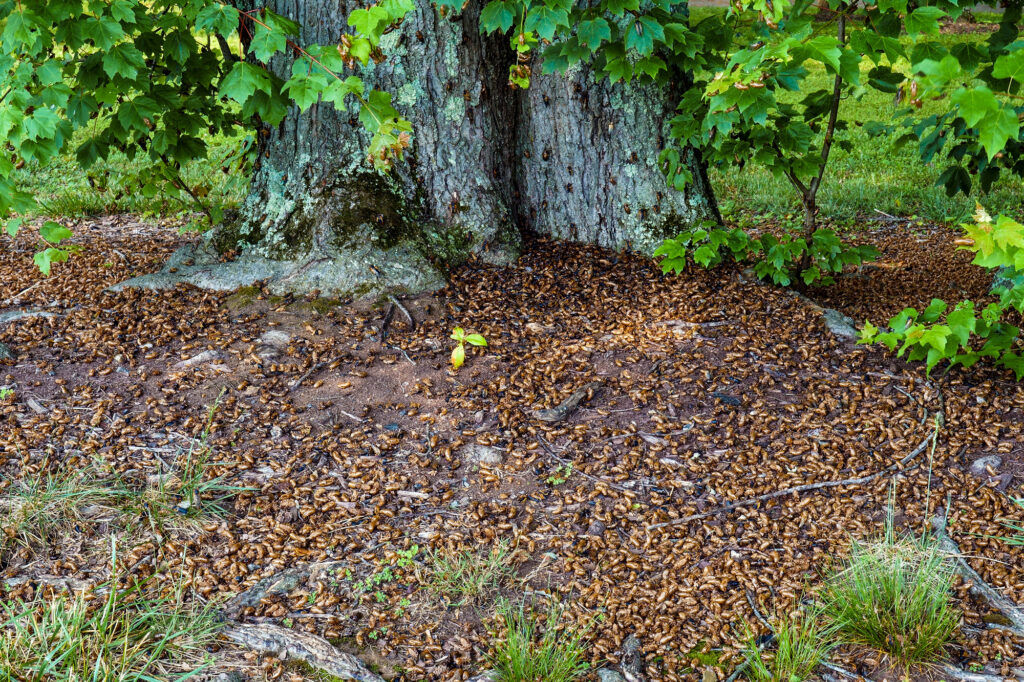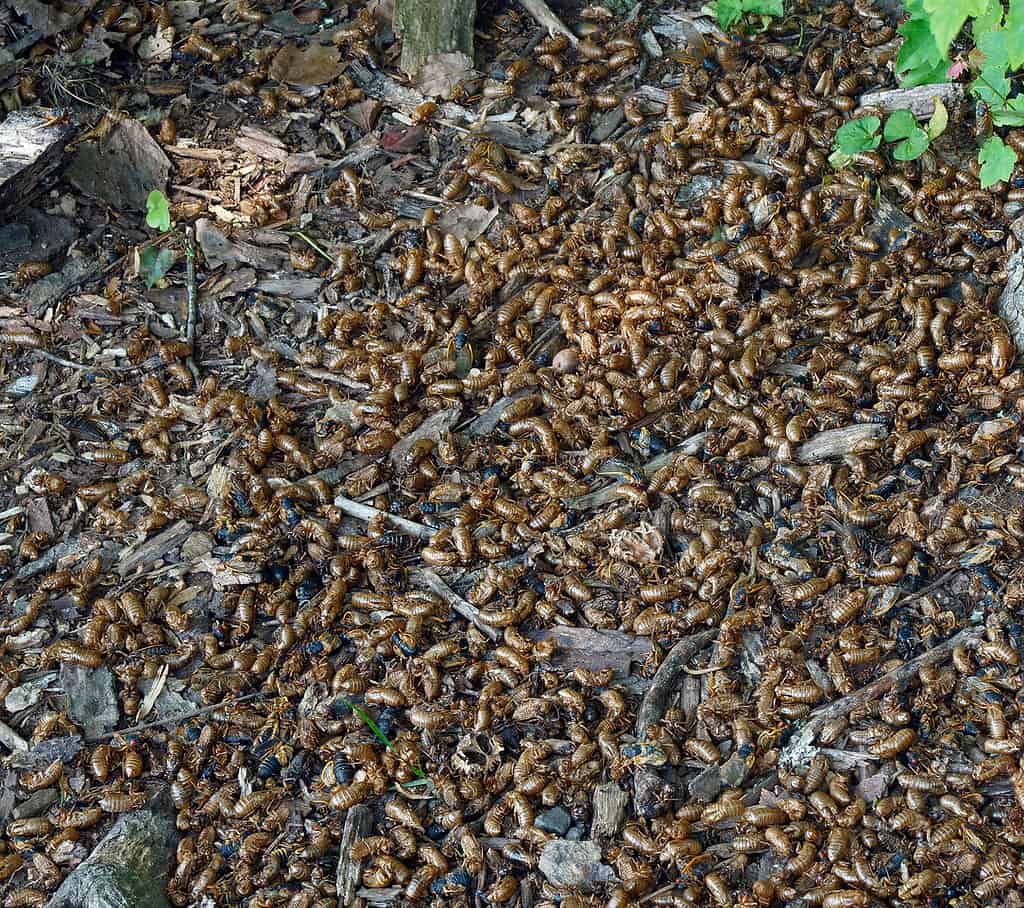With soil temperatures reaching 64 degrees across the East Coast, billions (perhaps even trillions) of cicadas from Brood X are emerging across states like Virginia, Maryland, Indiana, and Tennessee.
Brood X cicadas emerge once every 17 years and are known as the ‘Great Eastern Brood’ due to the extreme concentration and range of cicadas.
Up to a Billion Cicadas PER SQUARE MILE!
In fact, estimates from entomologists place the amount of cicadas emerging at up to 1.5 million per acre! At that density, just 667 acres (about one square mile) could suddenly become home to more than a billion cicadas!
(For perspective, scientists recently estimated there are between 50 billion and 430 billion birds across the entire Earth. You can see how cicadas “overwhelm” predators by coming out in such great numbers at once!)
With cicadas from Brood X rapidly emerging from the ground, the question on your mind is likely “what does 1.5 million cicadas per acre look like?
The reality is that cicada concentrations vary dramatically. With the cicadas of Brood X emerging just once every 17 years, areas with heavy development since 2004 will likely be short on cicadas. However, heavily wooded areas that have had their soil largely undisturbed will see larger concentrations of cicadas.
Where Cicadas are As of May 19th

The tracking app ‘Cicada Safari’ allows users to upload photos of Brood X cicadas to track their emergence. As of May 19th, the vast majority of sightings are in the Washington DC region.
At A-Z Animals, we recently explored wooded forests around the Washington DC region, which is one of the epicenters for Brood X. Below you’ll find pictures of what 1.5 million cicadas per acre looks like.
To find cicadas look for trees undisturbed by recent development

A tree filled with molted cicada shells
©iStock.com/nickkurzenko
Brood X cicadas that emerge from the ground will first molt into winged adults. Molting is done on vertical surfaces, so you’ll often see large piles of molted skins underneath trees and other shrubs.
In the picture above you can see a tree with dozens of molted cicada shells. Underneath the single tree sits thousands of shells that have piled up into layers. With thousands of molted cicada shells underneath just a single tree, you can begin to understand how more than a million cicadas emerge per acre!

©nickkurzenko/ via Getty Images
Zooming back across the ground you can see what appears to be a pile of leaves. However, look closer and you can see this is actually thousands of cicada shells piled up at the base of a tree. In this area, every tree had thousands of cicadas shells. A lower number of cicadas that had successfully molted continued to mill about in the pile while squirrels and birds from nearby were happy to find easy meals for the day.
Below you can find a tweet from twitter user Mitch Zuckerman which shows what cicadas look like in Silver Springs, Maryland. In areas where cicadas have emerged from the ground in recent days there are now piles of shells while most of the cicadas have no moved into the trees above.
The emergence of billions of cicadas won’t last long!
After molting their shells, cicadas will keep a lower profile as their bodies and wings develop. During this period that’s currently occurring across much of Washington DC, you’ll see many cicadas in the grass Afterward they’ll fly into the trees where males will begin their mating calls.
Male cicadas will only live two to four weeks after molting while females live longer to lay their eggs. The females will cut slits in tree branches and lay their eggs inside. The coming weeks will get very loud in wooded areas where Brood X has emerged. In fact, one male cicadas’ mating call can be as loud as 120 decibels.
By July the lifespan of the last generation of cicadas will be over. Tiny nymphs will drop from trees and burrow into the ground alongside the roots of trees, beginning another 17-year cycle!
Cicada Brood X News & Information
Brood X is currently (spring 2021) emerging on the east coast of the United States. More information and coverage can be found here!
- Cicadas in New York: What’s Happening Now?
- Cicadas in Pennsylvania: What’s Happening Now?
- Cicadas in Virginia: What’s Happening Now?
- Cicadas in Tennessee: What’s Happening Now?
- Cicadas in Washington, DC: What’s Happening Now?
- Will Cicadas Eat My Tomato Plants?
- Cicada Brood X 2021: What is it and should you be concerned?
- Why Do Cicadas Only Come Out Every 17 Years?
- Cicadas vs Locusts: What’s The Difference?
Up Next…
- Cicadas in Maryland: What’s Happening Now?: Find out the latest update on the cicada brood.
- Will Cicadas Cause More Snakes? Copperheads?: Will cicadas bring the snakes out of their hidey holes? Find out here.
- Can Dogs Eat Cicadas?: What will happen if your dog ate cicadas? Find out here.
The photo featured at the top of this post is © nickkurzenko/ via Getty Images
Thank you for reading! Have some feedback for us? Contact the AZ Animals editorial team.






